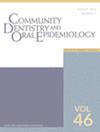Psychosocial Profiles of Older Adults by Dentition Status and Dental Utilisation History
Abstract
Objective
Psychosocial factors can affect health. Patterns of psychosocial stressors and resources among older adults were examined for oral health status.
Methods
The Health and Retirement Study (HRS) is a representative sample of US adults > 50 years. Participants completed the 2018 HRS CORE survey and the Psychosocial and Lifestyle Questionnaire–Panel A “Leave Behind” survey (HRS-LB) (N = 4703). All measures were self-reported and stratified into outcome groups: (1) edentulous/dentate, (2) with/without a recent dental visit in the last 2 years. Psychosocial measures covered three domains: well-being, beliefs, and lifestyle. Specifically, loneliness, life satisfaction, perceived age, social status, control, mastery, and chronic stressors were included in this analysis. Latent class analysis (LCA) identified profiles of adults based on the distribution of psychological and social stressors and resources. Associations between latent classes and being edentulous and a recent dental visit were examined in logistic regression models.
Results
About 30% reported no recent dental visit; 14% were edentulous. Three latent classes were identified; profiles had different distributions of psychosocial factors. About half (47%) were in Class A: “Satisfied/Connected” (n = 2230), 28% in Class B: “Satisfied/Lonely” (n = 1293), and 25% in Class C: “Unsatisfied/Lonely” (n = 1180). “Satisfied/Connected” adults had the fewest psychosocial risk factors, most resources, were dentate, and had a recent dental visit. “Unsatisfied/Lonely” adults exhibited the most psychosocial risk factors and fewest resources and lacked a recent dental visit. “Satisfied/Lonely” adults exhibited characteristics between Classes A and C. In fully adjusted regression models, Class B adults had 1.29 (1.03–1.62) times greater odds than Class A to be edentulous and 1.26 (1.07–1.50) times greater odds to not have a recent dental visit. Class C adults had 1.22 (0.97–1.53) times greater odds than Class A to be edentulous and 1.31 (1.10–1.57) times greater odds to not have a recent dental visit.
Conclusion
Adverse psychosocial factors are associated with edentulism and lack of routine dental visits. Exposure to psychosocial risk and resource factors can affect oral health. Health providers should assess older adults for loneliness and other psychosocial risk factors, and policies and programmes that support older adults' psychosocial needs should be expanded.

 求助内容:
求助内容: 应助结果提醒方式:
应助结果提醒方式:


